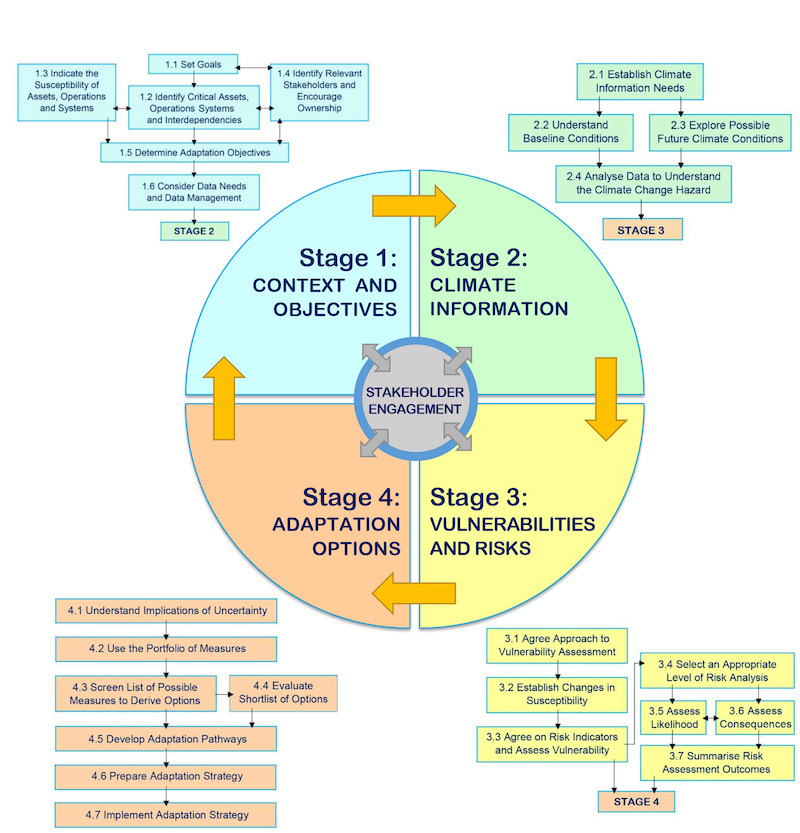Climate change
The PTGCC is a permanent, cross-Commission PIANC Task Group providing a common platform for coordinated work to support PIANC members and the wider sector in addressing climate change mitigation and adaptation issues.
Launched by the PIANC President at the international COP25 in Madrid, Spain in 2019, the Declaration is a ‘call to arms’ to accelerate and scale up action to reduce the potentially significant risks that climate change poses to the navigation sector.
Climate Change Adaptation Planning for Ports and Inland Waterways
The good practice guidance on Climate Change Adaptation Planning for Ports and Inland Waterways prepared by PIANC’s technical Working Group 178 was published in 2020.
- The guidance sets out a staged approach to identifying and assessing possible climate change adaptation measures for waterborne transport infrastructure.
- For those that wish to use it, the guidance suggests a detailed methodological framework. This is presented as a stepwise approach.
- The guidance includes a portfolio of possible adaptation and resilience measures, developed through an extensive international engagement exercise. The porfolio of measures lists a wide range of physical, operational and institutional options for adapting or strengthening the resilience of navigation infrastructure assets, operations and systems.
- The guidance also includes additional supporting resources, including data collection templates and monitoring recommendations to help inform adaptation decision-making.
The good practice guidance on Managing Climate Change Uncertainties in Selecting, Designing and Evaluating Options for Resilient Navigation Infrastructure, a follow-up of the WG 178 guidance, was published as a PTGCC Technical Note in 2022. A translation into French can be found HERE.

Working with Nature and Climate Change
Working with Nature has a potentially important role as a tool in helping to facilitate effective climate change adaptation through natural resilience. Adopting the approach indicated in the steps shown above should both:
Help to ensure understanding of the implications of changes in temperature, precipitation, sea level, etc. for the natural environment.
Allow the user to ‘climate proof’ future navigation infrastructure.
‘Doing things in a different order’ as suggested by Working with Nature therefore provides an ideal opportunity to build climate change projections into the project planning and design – identifying opportunities to reduce the vulnerability of natural ecosystems and improve their resilience at the same time as realising navigation infrastructure objectives.
Climate change adaptation solutions can be achieved by incorporating the considerations.
Establish project need and objectives
Include an objective to ‘climate proof’ the development’ (i.e. to reduce vulnerability, and to increase resilience to the effects of climate change).
Understand the environment
Understand and incorporate relevant climate change projections – both how climate change will be manifested in terms of changes in high or low flow, water temperature increases, etc. and – importantly – how ecosystems are likely to respond. The latter understanding should include both adverse and beneficial impacts of climate change on the natural environment.
Make meaningful use of stakeholder engagement; identify win-win options
Consider what is needed to adapt to climate change both from a technical specification and from a nature perspective, for example, seeking to protect vulnerable habitats or to deliver positive ecosystem outcomes.
Prepare project proposals/design to benefit navigation and nature
Design a project which helps to improve the resilience and/or reduce the vulnerability of both navigation and nature.

















